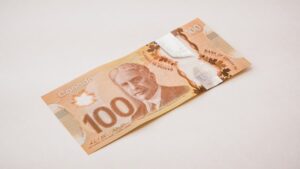Exploring Advanced Deriv Forex Trading Techniques: Swaps and Forwards
When it comes to forex trading, traders are often looking for advanced techniques that can help them maximize their profits and minimize their risks. One such technique is the use of derivatives, specifically swaps and forwards. In this article, we will explore these advanced forex trading techniques and discuss how they can be used to enhance trading strategies.
Swaps:
Swaps are derivative contracts that allow traders to exchange cash flows based on different interest rates or currencies. In forex trading, the most common type of swap is the interest rate swap. This involves exchanging fixed interest rate payments for variable interest rate payments. The purpose of a swap is to hedge against interest rate fluctuations or to take advantage of interest rate differentials.
For example, let’s say a trader is holding a long-term position in a currency pair and is concerned about potential interest rate increases. They could enter into a swap agreement where they receive a fixed interest rate payment and pay a variable interest rate payment. This way, if interest rates do increase, the trader will be able to offset any losses in their forex position with the income from the swap.
Swaps can also be used to take advantage of interest rate differentials between two currencies. For instance, if a trader expects that the interest rates in one country will rise relative to another, they can enter into a swap agreement to receive the higher interest rate payments. This can generate additional income for the trader, enhancing their overall trading strategy.
Forwards:
Forwards are another type of derivative contract commonly used in forex trading. A forward contract is an agreement between two parties to buy or sell a specific amount of a currency at a predetermined exchange rate on a future date. Unlike futures contracts that are traded on an exchange, forwards are customized agreements between two parties.
Forwards can be used as a hedging tool to protect against currency fluctuations. For example, if a trader is expecting the value of a currency to depreciate in the future, they can enter into a forward contract to sell that currency at a predetermined exchange rate. This way, if the currency does depreciate, the trader can sell it at the agreed-upon exchange rate, effectively locking in their profits.
Similarly, if a trader is expecting the value of a currency to appreciate, they can enter into a forward contract to buy that currency at a predetermined exchange rate. This way, if the currency does appreciate, the trader can buy it at the agreed-upon exchange rate, again locking in their profits.
One important thing to note about forwards is that they are not as liquid as spot transactions. Once a forward contract is entered into, it cannot be easily canceled or modified. Therefore, traders should carefully consider their positions and market expectations before entering into a forward contract.
Conclusion:
Swaps and forwards are advanced forex trading techniques that can be used to enhance trading strategies. Swaps allow traders to hedge against interest rate fluctuations or take advantage of interest rate differentials. Forwards, on the other hand, can be used to hedge against currency fluctuations or lock in profits. By understanding and utilizing these advanced techniques, forex traders can have more control over their positions and increase their potential for profitability. However, it is important to note that derivatives trading carries risks, and traders should always conduct thorough research and seek professional advice before implementing these strategies.






